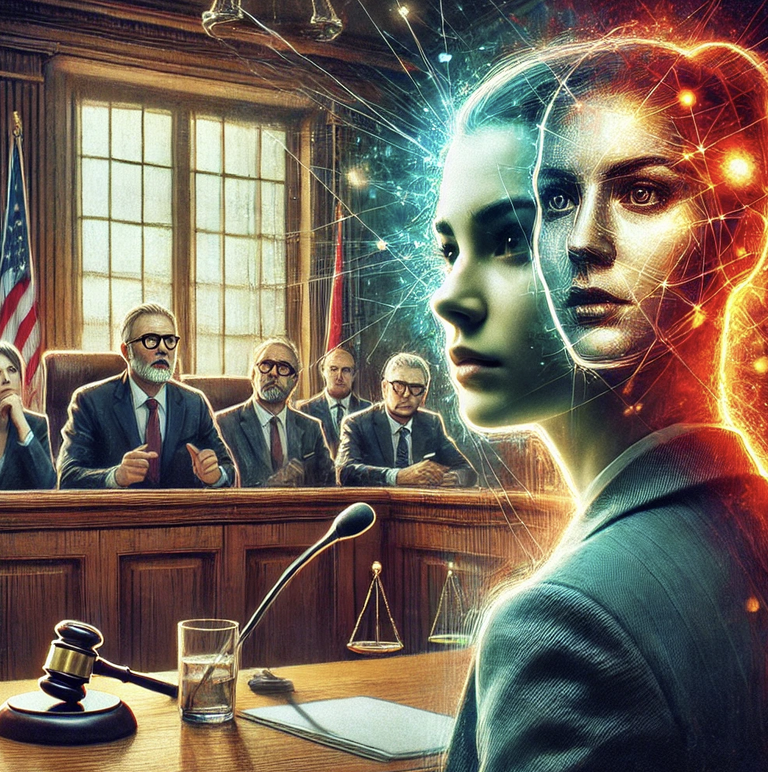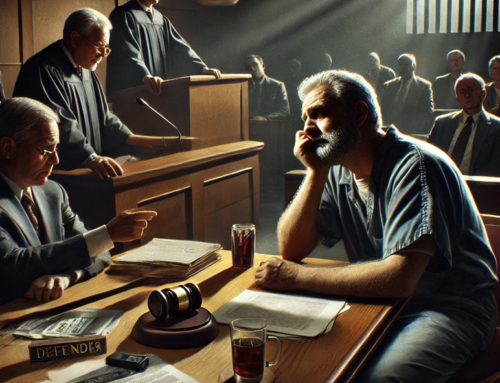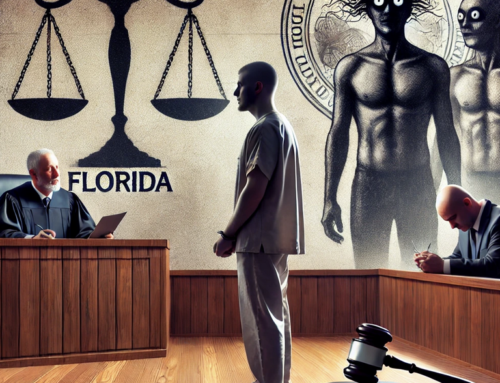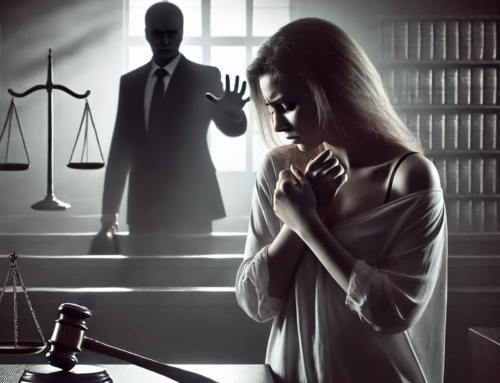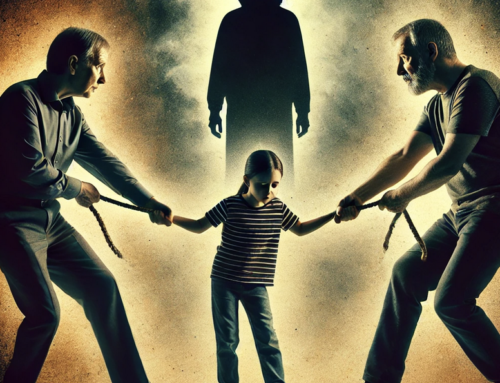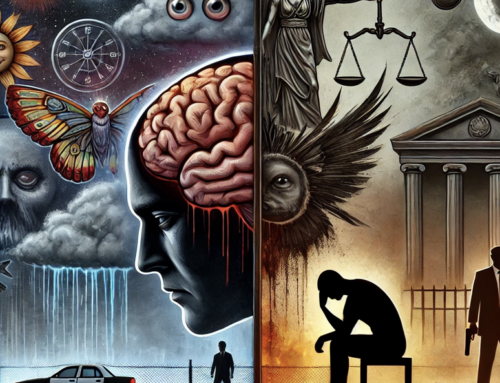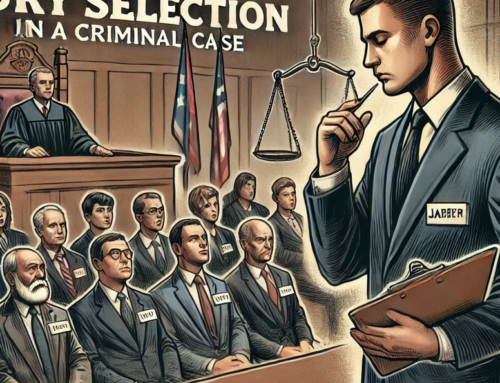Eyewitness Testimony – What Is It?
If two individuals stand as witnesses of the same event, will their testimonies be the same? Will they tell and describe the event that transpired without any contradictions?
When a person witnessed a crime, untoward incident, or other events that need legal support, a testimony from the eyewitness is necessary. The eyewitness will later appear before the court and tell the details of what he/she witnessed on that fateful day. The entire process may be more complicated than initially presumed.
It involves describing the things that happened while the crime was in progress. It also includes everything that happened between the time the event or crime concluded and the time that the witness made an appearance in the courtroom.
The policemen and lawyers may interview the eyewitness, who should describe the perpetrator to several people. The eyewitness is expected to identify the perpetrator and other things that the policemen and lawyers may require from him.
The Testimony of an Eyewitness Is Vital in Psychological Research – Why?
The eyewitness must stand before the court and narrate what transpired on the day the crime happened. The eyewitness will build his testimony based on his perspective. The eyewitness testimony may turn out to be enormously compelling. It would be hard for anyone, who hears the testimony, to take it with a grain of salt. But, what is the extent of its importance?
There are various pieces of evidence, which have been gathered through decades of research, suggesting that the testimony of an eyewitness may be the most convincing evidence to present in court. However, the accuracy of the testimony is dubious in many cases.
There is proof that an eyewitness can commit a mistake in recounting the details and presenting his testimony. A wrongful conviction can arise from this mistake. It will send people to rot in prison or even get a death sentence for the crimes they did not carry out.
More than 75% of DNA exoneration cases have proven that the flawed testimony of the eyewitness implicated innocent people. One of the most famous mistaken identity cases is was that of Ronald Cotton. The rape victim named Jennifer Thompson identified Ronald Cotton as the man who raped her. Thompson won the case, and Cotton got life imprisonment.
After more than a decade, Cotton was cleared of all charges with the help of DNA evidence. At the same time, the real rapist was finally identified. For more details about the Thompson case and other stories of falsely convicted individuals that DNA evidence had saved, you may visit the website of Innocence Project.
There is hope for those who are falsely accused. However, such grave mistakes should never have occurred if proper precautions are observed during an investigation and judicial process. Psychological science has warned everyone regarding the things involved in some of those precautions.
Misinformation
Misinformation can find its way into the memory of the eyewitness somewhere between the time when the eyewitness saw the incident and making a report. When the witness was fed with erroneous facts or data after the occurrence of the event, he may not be able to answer a simple question like which traffic sign was at the intersection at the time of the incident. The eyewitness may start to doubt what he had seen at such a critical time.
In an early study that subjected the memory of an eyewitness to a test, the undergraduate participants were required to watch a slideshow that involved a small, red car running toward a pedestrian and hitting a person. Some subjects were presented with leading questions regarding the event that had been shown in the slides.
For example, the participants were asked about the speed of the traveling car when it sped by the yield sign. The real intent of this question was to mislead the participants. In the original slide, there was no yield sign. The one that was present on the scene was a stop sign.
Later, the participants viewed a pair of slides. One slide, which was the original, contained the stop sign. The second slide, which was the replacement, had the yield sign.
The researchers asked the participants which slide they had seen previously. The participants presented with a question involving the yield sign mostly chose the slide that contained the yield sign. Keep in mind that this group of participants had also seen the original slide with the stop sign. The misleading question, which this group of participants received, gave them an inaccurate memory.
Experts call this phenomenon the misinformation effect. The misleading information that the participants were exposed to after witnessing the event has contaminated their memories about the event they witnessed. Due to the misleading question earlier, their memories of the event they witnessed were replaced with something that the question had insinuated.
Numerous subsequent studies proved that the erroneous information presented to the people, who just witnessed an event, can become contaminated. The different misinformation presented in the different studies made the witnesses incorrectly remember everything. The misinformation included the distinguishing marks on the perpetrator’s real face, objects that are not present in the crime scene, and other things that may distort the memory of the witness about the event.
Young adults are often the research subjects in psychology. The studies show that young adults are vulnerable to misinformation. However, older adults and children can be more susceptible to misinformation. Moreover, misinformation can happen suddenly and without outside manipulation or any intention to mislead.
Even the slight change in the wording of a question may cause misinformation effects. In one study, the participants are more likely to give an affirmative answer when asked whether they saw the broken headlight as compared to whether they saw a broken headlight.
According to other studies, misinformation can distort memory easily during social situations. It poses a bigger problem in cases that involve more than one eyewitness to a crime or event. Often, witnesses tend to discuss the immediate aftermath of the event among themselves while waiting for the police.
Different witnesses have different perceptions of the event that happened. They can notice or see things differently. The memory of the event that a particular witness has remembered may be different from that of the other witnesses.
Even though the witnesses had seen the same event, they may say different things when they begin to recall the event that transpired. When they discuss the event or crime later, they reinforce the shared memories of the event and at the same time contaminate each other’s memories due to their different perceptions.
The misinformation effect was tried in a laboratory. Researchers set up a video and grouped the participants in pairs. A pair should watch the same video together, but they used different polarized glasses while watching. In effect, the two people who were watching the same thing on the screen saw two different versions of the video.
In the video, the electrician was wandering around an unoccupied house. There was a total of eight differences between the two versions of the video.
After watching, the participants or co-witnesses were presented with 12 memory test questions and worked together in answering them. Four of the questions were about the details that were different in the two versions of the video. The co-witnesses had the chance to influence each other’s memory of the event that they saw on the video.
The subjects answered another 20 memory test questions, which they should answer individually. Eight of the questions were about the details that were different in the two versions of the video.
They managed to get 79% accuracy for the questions that they had not discussed with their co-witness. Their accuracy dropped to 34% for the questions that they had discussed with their co-witness. The study proved that the co-witnesses could corrupt the memories of the subjects regarding the event that they had seen.
From the test, it is evident that the accuracy of the subjects is highly dependent on their decision to discuss the event among their co-witnesses or lack of interaction with others.
Identifying Perpetrators
Aside from remembering the details of the crimes that they witnessed, the eyewitnesses often need to recall the faces and other distinguishing marks of the criminals.
Authorities often ask the eyewitnesses to describe the perpetrators and later identify them from lineups or books of mug shots. There is also a substantial body of research showing eyewitnesses commit serious errors, which are often inevitable and understandable.
In most parts of the United States, lineups are typically done using pictures or photo spreads instead of making the suspects stand up in line behind a one-way glass wall. Under many circumstances, a criminal defense attorney is permitted to attend. The eyewitness should take a look at a set of pictures of about six to eight people dressed and photographed in the same manner. One of the presented pictures is the real suspect, and the others are just fillers or foils.
If the eyewitness has identified the real suspect, the police will carry out further investigation. If the witness failed to choose the suspect, the police should decide on another direction to continue their investigation.
Errors in identifying the perpetrators could be due to some factors, including much delay between the time of witnessing the event and identifying the perpetrator, too little time to look at the suspect, or poor eyesight or viewing conditions when the crime took place.
The process was replicated in laboratory studies that involved eyewitness identifications. The research subjects were made to watch a mock crime, often in a form of a short clip. The research subjects should identify the suspect from a lineup of actual people or photos of various people.
The subjects are sometimes presented with a target-present lineup (in which the perpetrator is included in the actual lineup) or a target-absent lineup (in which the actual lineup is purely made up of foils or fillers). The research subjects are given instructions, and asked to identify and choose the perpetrator from the presented lineup.
The lineup, instructions, and particular details of the entire experience in witnessing the event can influence the choice of the witnesses when picking the perpetrator from the lineup. It is also possible for them to not choose anyone from the selection at all.
There are two ways that witnesses can commit an error in choosing the perpetrator:
-
- Picking a foil from the target-present lineup or not be able to pick anyone at all.
-
- Picking someone from the target-absent lineup and name him as the perpetrator.
Some factors, which have been mentioned before, can make the eyewitnesses commit errors in identifying the perpetrator. Also, the experience may be stressful to the witness, especially when being asked to identify someone from a different race.
The legal system has a hard time dealing with most of these problems. However, the justice system can do some things that can prevent the lineup identifications from going awry. For example, the investigators can gather fair, high-quality lineups.
A good lineup includes the suspect and the foils that will not stick out, even though the witness has read or heard about the features of the perpetrator somewhere. Add to that, everyone in the lineup must have the same characteristics or features of the perpetrator based on the testimony of the eyewitness.
Other important suggestions from the research include conducting sequential lineups, giving the witness some unbiased instructions, and choosing double-blind lineups.
Types of Biases in the Memory
Your memory can be vulnerable to other errors and biases. People tend to forget the things that occurred at some point in their lives as well as the people they got acquainted with in the past. They tend to mix up the details over time and even recall some complicated incidents that did not happen. The trouble with these errors is that they are difficult to correct or undo once done. In the end, people will come to remember the false memory.
No one is spared from having faulty memories – not even you. A good example is when you place your keys somewhere without looking where you put them. Later, you will try so hard to remember where you put your keys as you try to retrieve them. Another example is when you want to remember the name of someone but to no avail, even though you can feel that you have it somewhere in your memory.
Other memory biases can be longer-lasting and more complex. For example, our beliefs and expectations about things in the world can significantly influence our memories. Life is filled with redundancies. The memory systems use and form schemata or memory templates as the systems exploit the repetitive patterns.
Take the library as an example. We know and expect that it has tables, shelves, books, and librarians. You don’t need to do anything just to notice those things. However, you may likely recall the schema-consistent data, such as shelves and tables, due to lack of attention. You will likely generically remember these items regardless of their presence or absence at the time.
Schemata can be beneficial and helpful with information overload. However, it may cause difficulties in retrieving particular details of the event later. Can you remember the actual appearance of the library or the one that your library schemata has approximated?
False Memories
Some errors, which occurred in the memory, are large enough to have their designated class called false memories. At the start of the 1990s, a pattern materialized wherein people would undergo therapy to ease everyday problems and depression. However, memories of horrible and violent victimhood developed within the prescribed term of therapy.
According to the therapists, their patients were recalling true accounts of genuine abuse that happened during childhood. For many years, they kept the memories hidden inside their minds.
But, some psychologists reasoned that the patients may have remembered incorrectly or may have thought that they had such an experience. The memories could have been created during therapy. The researchers have decided to find out whether false memories could be created using procedures that are similar to the ones that the therapists used on their patients.
In the early studies about false memories, the researchers asked the family members of the undergraduate subjects for some events that happened to each student during childhood years. The researchers informed the subjects that their families divulged various events that happened in their childhood. The researchers then introduced short hints to the subjects and asked them whether they could remember the events that their families have given.
The researchers handed each subject a booklet and asked the subjects to write something regarding each of the four events. The researchers interviewed each subject twice on separate occasions.
To test the subjects, the researchers fabricated one childhood event of the subjects. The family of each subject confirmed that the fabricated event did not happen to the participants.
In the initial study, the fabricated event was about the subject trying to find his way in a shopping mall, and someone saved him. After asking the subjects whether they were familiar with these events taking place on three independent instances, 25% of them believed that they experienced such an event.
In the succeeding studies, the researchers used a similar process to make the subjects think that they were attacked by a ferocious animal, knocked over some punch on the parents of the bride, had been saved by a lifeguard, or other fabricated events.
The more recent studies on faux memories employed various methods of manipulations to generate false memories on manipulated subjects, who belonged to a group of occasional majorities and sizeable minorities. As an example, a team of researchers created a fake advertisement for Disney vacations. Each subject’s task was to review the advertisements. To make it more convincing, the researchers arranged for the meeting at Disneyland between Bugs Bunny and the subjects. It was a ridiculous false memory since Warner Brothers own the character Bugs Bunny.
A different team of researchers altered the childhood pictures of the participants using Photoshop. They made it appear that the subjects went on a hot air balloon during childhood. They asked the subjects about the things they remembered about the hot air balloon adventure and told them to describe their experience.
Other researchers presented the subjects with an unaltered class picture during their childhood years and a fake class prank story. It increased the possibility that they would falsely recall the fake story.
The researchers have persuaded the subjects to erroneously recall various childhood experiences using false feedback manipulation. In the studies, the subjects were made to believe that a state-of-the-art, sophisticated computer system analyzed their completed questionnaires. It generated a certain conclusion regarding the subjects’ particular events during their childhood years. The subjects, who believed the conclusion that the computer gave, made some adjustments to match their memories with the new information.
Various false memories were implanted in the same manner. There were studies where subjects were made to believe that there was a certain food that made them sick when they were young. As a result, they avoid consuming that food.
Experiencing an unfavorable encounter with a character from Disneyland and seeing their parents inflict physical harm to each other are just some of the false memories implanted into the subjects’ memory using the same method.
Once the false memories have been implanted, the subject will find it difficult to differentiate between the false and the real memories.
Conclusion
Jurors are convinced that the testimony of an eyewitness is a powerful tool in identifying the perpetrators, despite the fact that it is not something accurate and reliable. Mistakes in identifying the perpetrator can happen, and these slip-ups can pave the way to false accusations and convictions.
Some of the things that can corrupt the memory of the eyewitness are leading questions, the subject’s expectations for the things that should have transpired, discussions with other witnesses, and misinterpretations of events. Any person tends to recall events that did not even happen.
The problems involving memory are real, and the legal system needs to address them right away. What measures should be done to start fixing them? There are several recommendations presented, and many are merely waiting for proper implementation. If you’re ever facing criminal charges, the best course of action is to make sure you have a defense lawyer on your side who understands these issues.
Some of the recommendations for legal procedures are target-specific. The recommendations also include the proper time and method of interviewing the witnesses and the assembly and management of lineups. Other recommendations focus on providing appropriate education to jury members. Others should be responsible for assessing the memory of eyewitnesses.
The legal system will gain immense benefits from the testimony of eyewitnesses. However, many years of research argue that eyewitness testimony has been given more importance than its validated accuracy.


